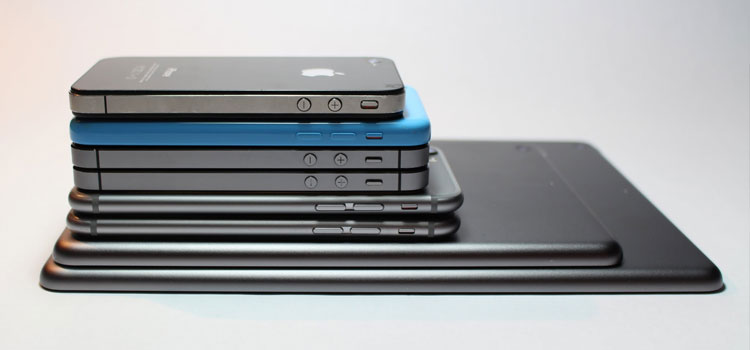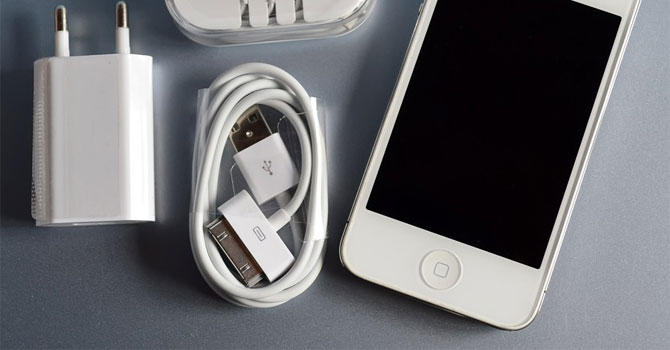Selling ideas isn’t exactly new.
For as long as there have been inventors, they’ve been turning their ideas into profit.
Have you ever had a lightbulb moment and thought of a product, service, application, or process that you think may benefit people and be profitable at the same time, but you didn’t have the time or resources to turn it into reality?
Don’t you regret letting your potentially million-dollar idea go to waste just like that? Don’t you sometimes wonder if that idea may have made you rich by now?
Well, wonder no more!
Today, let’s discuss how to sell an idea to a company so the next time you have a life-changing thought, you’ll know exactly what to do.
How to Sell an Idea
Selling an idea might not be a new concept, but it’s rarely simple and straightforward.
Here is a step-by-step guide to selling an idea to a company.
1. Research Your Idea.
You may think your idea is ground-breaking but is it really?
First, look up patent, trademark, and copyright records and see if your idea really is new or someone already beat you to it.
If you find a match, sorry to say, it’s over. Move on to the next idea.
Once you know that your idea is really unique, check if there’s a demand for your idea.
Your idea may be amazing in theory but the world may not be ready for it; that is, there isn’t a large enough customer base for it.
You’d also need to research the industry involved if you’re not already working or studying in it. How fast do things change in this industry? How long do you possibly have before your idea becomes obsolete?
2. Develop Your Idea.
Creating a detailed analysis and framework of your idea (if the idea is abstract or intangible) or designing a prototype (if your idea is a physical product) allows you and others to visualize your idea so that it’s not just in your head anymore.
Doing this also allows you to flesh out the details of your idea, along with its potential benefits and pitfalls. This way, you can sell your idea more effectively.
While you’re developing your idea, ask yourself the following questions:
What problem is your idea solving? Who benefits from this problem being solved? Do other solutions currently exist? How is your solution different?
What strengths and weaknesses does your idea have? Why is your idea better than other existing solutions? Why might your idea fail?
What are the opportunities and threats? Is your idea profitable? How large is the market for your idea? Who are your potential competitors?
3. Protect Your Idea.
You can’t sell your idea without telling someone about it.
But if you tell someone about it, what’s to stop them from claiming your idea as their own and thus stealing your profit?
This is why patent and copyright laws exist. But a layperson can certainly be intimidated and abandon their idea because the process of ownership seems too daunting to even start.
So here’s a quick lesson on patents and licensing.
A patent gives its owner “the sole right to exclude others from making, using, or selling an invention.”
It’s a form of intellectual property. For reference, a trademark is an intellectual property that protects your brand (e.g., the name “Coca-Cola®” and its image on bottles are protected by trademark; no other brand can use that name or image).
On the other hand, copyright is another form of intellectual property that protects intellectually created works, such as movies, music, software code, etc. from other people copying, distributing, and profiting from the works without the copyright holder’s permission.
For idea makers such as yourself, patents are important because they grant you exclusive rights to sell an idea or invention, essentially keeping copycats from bringing the same idea into the market.
You apply for a patent from the US Patent and Trademark Office.
If you believe in your idea 100% and you can afford the costs (the fees alone are at least $600; hiring a lawyer to do all the filing and legwork will cost you up to $10,000), applying for a patent is the best way to protect your idea.
However, if you can’t afford to patent yet, your next best choice is to get a provisional patent.
A provisional patent covers the same legalities as the real patent, but it only gives you 12 months of legal protection and rights to sell your ideas.
Benefits of a provisional patent:
- Cheaper application fees. This can be submitted for as low as $65.
- Earn money without the huge upfront costs. Because you didn’t spend hundreds or thousands of dollars in patent fees, you can enjoy the earnings of your idea
- Easy to file. You can file a provisional patent application with the USPTO online.
The problem with a provisional patent is that within the 12-month period, you need to convert this patent to a non-provisional patent.
A non-provisional or utility patent is the “regular” or full patent, but will only protect your idea or intellectual property for as long as the patent is in effect.
It’s more expensive than a provisional patent with fees ranging from $900 to over $15,000 depending on several factors, including:
- The type of invention or intellectual property – Is it a software-related invention? app invention? complex science invention? and so on
- The size of your business – If you’re just an individual filing a patent, you’d likely spend less than as an owner of a small business.
- Your location – Some states have more expensive patent applications than others.
Of course, utility patent cost will increase depending on the legal team you hire.
Assuming you do get a patent, how can you now sell your idea without selling it? That is, how do you get a company to invest in your vision without giving up your ownership of it?
The answer is to license your patent.
Patent licensing is like renting out your idea to a company and letting them use your idea to generate products or provide services.
The licensing arrangement benefits both you and the company: you get to earn from your idea while not having to shell out time or money to manufacture products or deliver services, while the company gets to earn from selling the products while not having to invest in the research and development phase.
I’ve previously written about how to make money from licensing your invention.
4. Create Your Pitch
Your pitch is the story behind your idea, why it’s important, and how profitable it can be for both you and the company you’re selling your idea to.
First, write down the story in your own words, so when you create the presentation for the companies, you have a reference ready.
Write down your non-negotiables as well. While selling your idea, some negotiation will be involved. But there are supposed to be some boundaries that you don’t want to overstep.
For instance, you should have a minimum amount or percentage in mind, below which you’re not willing to pursue a deal.
Make a presentation that addresses the problem that your idea solves, how your idea can solve that problem, how the idea can be implemented, and how everyone benefits from this idea: consumers, you, and the company.
5. Find Companies to Sell Your Idea.
List down potential buyers of your idea. Whether it’s an individual entrepreneur or a multinational company, what should matter is if the company has enough capital to take your idea and make it into a reality.
So how can you identify companies that are a good fit for you and your idea?
If it’s a consumer item, research similar products and who manufactures them.
Another way is to find trade associations or organizations of the industry involved and go over their membership list to find companies.
Sometimes, a simple Google search can work wonders and give you plenty of results.
In addition, here are some trusted sites that can help you find companies to work with.
1. IdeaBuyer
This site has been around for over a decade and has helped made ideas of individuals and small companies into a real, functional business.
They do not guarantee million-dollar deals for you, but prefer a partnership with idea-makers in working hard to meet specific goals, whether this goal is a successful retail outreach or help with patents.
Simply put, “Idea Buyer does not buy ideas. Idea Buyer does, however, provide opportunities for an idea to be bought.”
2. InventRight
This site has partnered with over 1,000 companies that are actively looking for bright ideas.
Although this site is focused more on invention ideas for fields like sports, kitchen, hardware and toys, you should definitely look around and check what companies are look for.
You might be surprised that your secret idea has been waiting to find its perfect company to adopt it.
3. InnoCentive.com
Maybe you don’t have just one idea to sell, but dozens and dozens of ideas.
If this is the case, take on the challenges from government agencies, non-profit orgs or private corporations and get a chance to win up to $1 million.
The ideas needed here range from math to engineering, sciences to design, and so much more.
5. Make Your Pitch
Now, the key is to be able to convince companies that they should license your patent.
Contact all of the companies on your list and ask for meetings to present your pitch. Write up a letter of introduction explaining why you’re contacting them and attach a sell sheet, which is a quick summary of your pitch.
Do note that this route requires you’re a top-notch communicator, since you’ll be pitching and selling your idea to numerous boardrooms. If you can’t communicate your ideas properly, it’s impossible to impress a company into licensing your idea.
If you’re going to show detailed information about your idea, like design plans or even your prototype, make sure you’re already advanced in the negotiation phase such that everyone is comfortable with signing non-disclosure agreements.
Familiarize yourself with the following payments make sure you’re offered a fair price.
Upfront payment – This is paid by the licensee (the company) to the licensor (you) for the rights to use your idea. It can be an outright payment or a payment against future royalties. The usual minimum asking price for this is the cost of filing the patent plus 10% as good faith.
Royalties – These are the payments made to you based on a percentage of the sales. Depending on the industry, the usual is 2% to 5%, but can go as high up as 15%.
Annual minimums – This is a contractual amount that the company agrees to pay you, regardless of the actual royalties due. The purpose is to make sure the company does their part to maximize sales of the item.
Exclusivity – If your idea is sufficiently unique and significant, companies might want to pay an extra percentage to guarantee exclusive rights to your idea.
What do you do if the company wants to buy you out?
If your idea is definitely one-of-a-kind and valuable to a specific industry, the first company you pitch to would likely offer you a massive payoff.
While this is a good thing, especially if this is your first big idea, make sure you weigh the pros and cons first before deciding.
Are you 100% willing to let go of this idea to the first company that offered a buyout?
If not, licensing your idea is perhaps a better option. With this route, you will work with a company to bring your idea to reality, but with full knowledge that the company will brand it, manufacture it, promote it and control many functions of that product or service.
You may have some control throughout the process, but it depends largely on your licensing contract. When it comes to revenue, you will be given somewhere between 5% and 15% commission from every sale of the product.
6. Make a Decision.
Know that the day you make the pitch is not going to be the day a deal is made.
It can take a number of negotiations, meetings, and conversations before a contract is finalized.
Consider all the factors: profits, pros and cons, and the company itself before deciding to accept or decline an offer, or changing it to a more acceptable one.
If the sale is successful, document everything and have contracts looked at by a lawyer and notarized as soon as possible.
On the other hand, if a company rejects your idea, it doesn’t mean your idea was not a good one; it’s possible that the company knows that your idea isn’t ready to go to market yet, or that they are not a good fit.
Either way, don’t get discouraged. Keep on selling your idea until you’ve gone through your list and then some. If all you get are “no’s” then move on to your next idea.
Sell Your Idea Today!
If I could sell my idea for a million dollars days after my lightbulb moment, I would.
Realistically, it is best to sell your ideas through a reputable, already-existing company before launching your own company. This route gives you hands-on experience of everything from applying patents to dealing with copycats and eventually selling your ideas to the right buyer.
Selling your ideas is best if you have a mind filled with profitable ideas but lack the acumen for actually building a business from the ground up.
But once you have the right knowledge, experience, and capital to launch your own startup, don’t let anything stop you from sharing your ideas to the world.
Ever tried to sell an idea? How did that go? Share your stories with us in the comments!



























